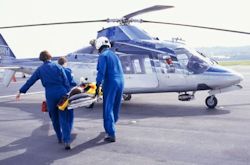Awkward Postures
Awkward postures occur with twisted, hyper-extended or flexed back positions. More muscular force is required when awkward postures are used because muscles cannot perform efficiently. They are unsafe back postures for patient/residents lifting.
Potential Hazards
Increased potential for employee injury exists when awkward postures are used when handling or lifting patients/residents.
Possible Solutions
Safe work practices help to avoid awkward postures while moving patients/residents.
OSHA does not consider using a back/safety belt to lift as a safe work practice. However, safety belts may reduce the probability of injuries by helping employees remember to use safe lifting techniques (i.e., lifting with the legs, not the back).
- Twisting or bending forward, backward or to the side to lift or lower. This occurs because the muscles must handle your body weight in addition to the weight of the patient/residents being lifted. Injuries are most likely if twisting is required to move patients.
- Holding the arm out straight to support objects or patients for several minutes. This contributes to muscle and tendon fatigue, and joint soreness.
- Position patients to avoid twisting and bending during a lift
- Use assist devices or other equipment whenever possible
- Use a team lifting techniques for heavier objects or patients
Knowledge Check Choose the best answer for the question.
2-3. Which of the following is a safe work practice to avoid awkward postures when lifting or moving a patient?
You forgot to answer the question!

